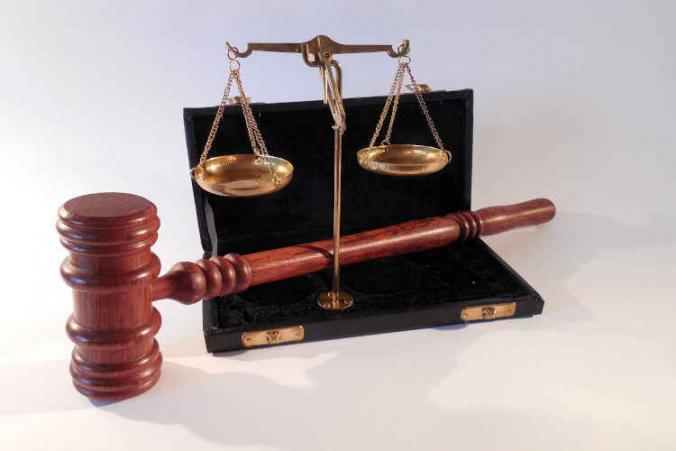Many people with a work injury claim or L&I claim reach out to me during their workers’ compensation appeal. The Board of Industrial Insurance Appeals (also known as BIIA or the Board) is the first establishment for a workers’ compensation claim appeal in Washington State.
About the Board of Industrial Insurance Appeals
The Board of Industrial Insurance Appeals is the state agency that hears workers compensation claim disputes. The Board is entirely separate from the Department of Labor and Industries (L&I). Said differently, the BIIA and L&I are not the same agency.
When L&I makes a written decision, any party can appeal the decision to the Board. For me, I’m often involved in disputes over decisions that relate to an industrial injury or occupational disease. However, the Board hears other kinds of disputes too. For example, these include safety citations under Washington Industrial Safety and Health Act (or WISHA). Another example is disputes over employer premium assessment and classification.
The BIIA is led by 3 full-time members. The Washington State governor appoints each member for 6 year overlapping terms. More explicitly, each member represents a different sector with vested interest in workers’ compensation matters. One member represents the public. Then, the second member represents the labor force. Finally, the third member is a business representative. Ultimately, the three members of the BIIA are responsible for making the final decision in every dispute. In addition, these members manage the agency as an organization.
Workers compensation appeals: Steps in the appeal process
When L&I makes a decision in writing, if either party disagrees with the decision, that party can appeal it to the BIIA. The disputing party must file the appeal within 60 days since they received the decision from L&I. The easiest and most efficient way to file an appeal is through the Board’s website.
Like any hearing agency or court, the Board has its own legal ground rules that govern workers compensation appeals. These practice and procedure rules apply to all parties (regardless of whether a party is represented by an attorney). When the Board receives an appeal, it assigns a docket number. Then, it notifies the parties and sends a copy of the appeal to L&I. Once L&I knows there has been an appeal, it has three options: (1) It can notify the BIIA that it is going to reconsider the decision; (2) L&I can change or reverse the decision; or (3) it can send its record to the BIIA so the appeal can proceed. For timing, L&I has 60 days to exercise one of these three steps.
L&I claim and workers compensation appeals: Jurisdiction
If L&I decides to change or reconsider a decision, then the BIIA returns the appeal to L&I for further action. However, if L&I does not, the Board decides if it has jurisdiction or the right to hear the appeal. If it doesn’t, then the Board issues an Order Denying Appeal. If it does, the Board issues an Order Granting Appeal. Furthermore, accompanying that order is a Jurisdictional History. This is as very useful document containing a timeline of the workers compensation claim decisions. This document establishes that the BIIA can indeed hear the appeal. Generally speaking, I ask to see this document every time a work injury claimant contacts me for an L&I claim appeal.
The BIIA mediation for L&I claim appeals
After an appeal is granted, the Board schedules a mediation. Usually, if all parties have an attorney, then meditation occurs over the telephone. When possible, if one (or both) parties do not have legal representation, then the mediation happens in person. Mediation at the Board is somewhat informal. During mediation, a Board Judge discusses the issues and helps the parties talk about possible resolution, without litigation.
The mediation process is confidential. If the parties reach resolution in mediation, it can save litigation expenses and any further delays. Otherwise, the case is sent on to the hearings phase. The hearing judge hosts a conference to establish litigation deadlines. These deadlines include hearing dates and witness confirmation dates. Moreover, they include discovery cutoff dates, motion hearing dates, and testimony completion dates. All these dates are put in a litigation order, which they send to the parties.
Burden of proof in workers’ compensation claim appeals
The appealing party has the burden of proving that the L&I claim decision under appeal is incorrect. Practically speaking, meeting the burden of proof requires a medical expert testimony for most issues work injury and work illness matters. Somewhat surprising, the parties don’t have to have an attorney in L&I claim appeals. However, once the appeal proceeds to hearing (and according to the Board):
“The appealing party should consider finding an attorney. An experienced attorney will represent L&I or the self-insured employer. An attorney can negotiate with the opposing parties, help obtain necessary witnesses, and make objections”.
My personal opinion
I agree with the BIIA’s position. Attorneys with significant litigation experience know how to play by the ground rules. On top, they understand the evidence to meet the burden of proof. Failing to present sufficient evidence in a Board appeal will result in an unfavorable decision. Even worse, it’s difficult if not impossible to fix insufficient evidence once the record closes at the Board.
The record becomes the certified record of the case for any further appeals to higher courts. Finally, from there on, there’s no opportunity to present new, more, or better evidence. More detailed information about L&I claim appeals can be found on the Board website at http://www.biia.wa.


